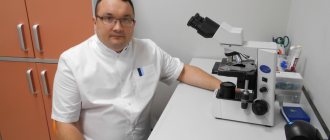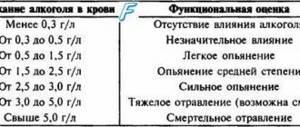10.11.2018
A healthy spinal region is important for a person's well-being. If problems arise, a neurologist and a vertebrologist who treats the spine help fight them.
The doctor must have remarkable knowledge in related branches of medicine: be not only a neurologist, but also delve deeply into neurosurgery and orthopedics.
Who is a vertebrologist?
The task of vertebroneurology is to identify cause-and-effect relationships between what spinal disease is diagnosed and how it overlaps with lesions of the nervous system in the periphery and in its central parts.
A vertebrologist develops preventive measures to prevent diseases of the spine (they also affect the tissues adjacent to it), diagnoses ailments of the area and prescribes treatment.
The basis of vertebrological care is conservative treatment methods. The doctor works even with advanced stages, selecting methods of non-surgical intervention. A qualified specialist has enormous medical experience. Without this he will not be able to:
- analyze symptoms;
- establish their cause;
- prescribe the correct treatment.
A vertebrologist works not with symptoms, but with causes. It solves complex problems of the musculoskeletal system.
What pathologies does a vertebrologist treat?
The specialization of a vertebrologist includes the treatment of the following ailments:
- back pain, including during pregnancy;
- pathologies of the cervical spine;
- disc protrusion of any level;
- intervertebral hernia;
- sciatica;
- osteochondrosis;
- osteoporosis;
- scoliosis;
- radiculitis of any degree;
- bone cyst;
- whiplash;
- lumbago.
In addition, a vertebrologist treats the spine after injuries and works with patients during the recovery period after major spinal surgery.
Diseases that a vertebrologist works with
Vertebrologist – what does he treat? The list of diseases for which his help is irreplaceable is extensive. It provides effective assistance to those who have received neurological help limited to symptom suppression. A narrower specialization involves assistance with diseases of varying severity.
Osteochondrosis
This disease is caused by the appearance of dystrophic changes that affect the vertebral joints, the vertebrae themselves with intervertebral discs. The areas of the cervical and lumbar regions suffer.
Painful sensations of varying severity appear in them, and sensitivity is sometimes impaired. The development of the disease leads to limited mobility and the appearance of tinnitus. Often a person begins to see and hear worse. All this contributes to a significant decrease in the quality of life.
Scoliosis
When the spinal column is curvature, the shape of the sternum changes. The intervertebral discs experience increased stress, and the nerve roots are compressed. The same pressure is felt on the organs in the abdominal and chest cavities. The doctor helps to change the angle of the spine, thereby easing the patient’s condition.
Osteoporosis
This disease is also on the list of diseases treated by a vertebrologist. Medical prescriptions are aimed at increasing tissue density and combating changes in their structure. The main danger of osteoporosis is the occurrence of fractures even as a result of slight stress, including walking and light impacts.
Hemangioma
The branch of vertebrology includes methods of assistance for vascular tumors. If they are located on the inside of the spinal column, this can lead to serious complications. The lack of timely qualified treatment is fraught with compression fractures of the vertebral bodies and paralysis. The spinal cord and its roots are compressed, and the normal functioning of the internal organs is disrupted.
Kyphosis
When the thoracic region is curved, pathological processes affect both the spinal column and the internal organs located in the vicinity of it. Due to the decrease in chest volume, the body experiences a lack of oxygen. Pressure on the spinal cord with nerve endings leads to sensory impairment. The muscles are weakening.
Consultation with a vertebrologist is required for the following diseases:
- spondylolisthesis, when the position of the overlying vertebra is displaced relative to what is below;
- herniated intervertebral discs - with this pathology, the nucleus pulposus protrudes beyond the disc;
- disc protrusion – it leads to the contour of the intervertebral disc protruding beyond the vertebral area;
- radiculitis – it develops as a result of damage to the spinal roots;
- stenosis – narrowing of the spinal canal;
- bursitis, arthritis, arthrosis, gout.
You should make an appointment with a specialist if you experience acute pain in the lower back, regardless of the reason for it. Under no circumstances should you put off visiting a doctor if lumbago is accompanied by stiffness. The same actions should be taken if complex symptoms appear - from pain, movement disorders, cramps to numbness, lameness, urinary incontinence and constipation. Any back injury is a serious reason to consult a vertebrologist.
When should you contact a vertebrologist?
There are a number of specific symptoms that eloquently indicate pathologies of the spine. And any of these symptoms may be a reason to visit this specialist.
Most common complaints:
- constant headaches;
- neck and back pain;
- poor posture;
- dizziness when turning the head;
- high blood pressure (BP);
- migrating pain in different parts of the spine;
- appearance of a hump;
- arm pain, stiffness and numbness;
- girdling pain;
- the appearance of scoliosis;
- frequent pain in the heart area that is not relieved by analgesics;
- lumbar pain that can radiate to the buttocks and hip joint;
- weakness in the legs, as well as their numbness;
- violation of defecation and urination;
- smoothing the lumbar curve;
- dysfunction of the spine;
- the appearance of crunching and crackling sounds when turning and other movements of the spine.
You should immediately consult a doctor if your symptoms increase:
- the appearance of a different type of pain, that is, its nature changes;
- increased pain that radiates to other parts of the body;
- the appearance of weakness in the legs;
- dysfunction of the pelvic organs (urinary retention or involuntary urination);
- numbness of the skin.
There are quite a lot of them, and if it’s difficult to figure it out on your own, first make an appointment with a therapist. After listening to your complaints, he will tell you whether you need a vertebrologist and what this specialist treats. Most likely, he will advise you to seek advice if:
- You have back pain and frequent dizziness. It is especially important not to delay treatment if the discomfort is localized in the cervical region.
- Frequent headaches in the temporal or occipital regions, which intensify or occur when tilting or turning the head.
- Legs or arms hurt, there is a feeling of numbness in the limbs.
- Prolonged pain in the heart area, intercostal neuralgia.
- Stiffness of movements, decreased mobility of the spine.
- Acute or chronic pain in the spine and limbs, which increases with walking or deep breathing.
An experienced vertebrologist is able to diagnose and find the cause of the disease already at the first appointment.
Diagnostic methods used by the doctor
It is important for a sick person to talk in more detail about the troubling symptoms at the first medical appointment. This determines how effectively he will be treated.
When listening to someone who comes to the appointment, the doctor pays attention to the following parameters:
- what is the nature and intensity of the pain, when it intensifies and where it is localized;
- whether the spine was ever injured, what treatment was performed;
- degree of tolerance to physical activity, level of ability to work, threshold of fatigue;
- Is your head spinning, are your limbs going numb?
- prevailing lifestyle;
- past illnesses.
The doctor will analyze the information and conduct an initial examination, resulting in:
- examine your back to identify or rule out postural distortion;
- apply palpation;
- will suggest performing sample tests (various tilts and rotations).
To complete the picture, you need to know the results of laboratory tests. You will need to take blood tests (from general to detailed) and urine tests (optionally with bacteriological culture of urine).
This is enough to establish the correct diagnosis and build a treatment regimen. But additional diagnostics are required. It is produced on special equipment. The most effective are:
- radiography of the spine - it is necessary when it is necessary to determine the condition of the bones;
- computed tomography - this method is used to determine whether a tumor has formed;
- ultrasonography;
- Magnetic resonance imaging.
The latter method is the most popular, since the resulting image shows not only the bone structures, but also the condition of the spinal cord (from the discs to the soft tissues). The need to use a specific diagnostic method is determined by the attending vertebrologist.
Advice from a vertebrologist
To maintain spinal health, you need to follow simple recommendations:
- maintain normal body weight;
- perform physical exercises correctly without overloading your back;
- balance nutrition;
- do a light warm-up every 60 minutes if you work while sitting;
- do exercises every day to strengthen your spine;
- Do not hesitate to see a doctor if you feel discomfort in your back.
It is easier to use preventative measures than to treat the consequences of your carelessness.
- Don't wait for the pain to go away on its own, this will give you a better chance of recovery. A good specialist will quickly diagnose you and prescribe treatment. Compliance with all instructions will help you restore the functionality of your spine using conservative methods.
- If you do not follow the course of treatment, the disease will progress and surgery will be necessary.
- Often the doctor recommends using the help of an osteopath or chiropractor. Their treatment can be painful, but effective.
If you need a consultation with a vertebrologist, you need to choose such a specialist very carefully.
This task is quite difficult, since in this case the patient will be treated not by injections or pills, but by the hands of the chosen doctor.
Popular medical centers, as a rule, offer free initial consultation services, during which the patient can meet a specialist, learn in detail about his experience, timing and methods of proposed treatment.
You can start treatment with a vertebrologist only if you do not feel discomfort when communicating with him and completely trust him.
Quite often, when back pain occurs, people try to solve this problem on their own using various ointments, a heating pad, or through familiar massage therapists who do not always have sufficient knowledge to prescribe an effective treatment course.
It is for this reason that you should definitely consult a vertebrologist. He will be able to select individual therapeutic exercises and a treatment regimen for the patient, which can significantly alleviate the patient’s condition and consolidate the resulting effect for a long period of time.
Undoubtedly, any back disease significantly “spoils” a person’s quality of life - functional activity decreases and severe pain occurs. However, today's medicine successfully treats and cures various pathologies of the spinal column. And qualified vertebrologists will help you in such a difficult matter. Be healthy!
Who is a neurologist
Neurologists also deal with painful pathologies caused by disruptions in the normal functioning of the nervous system. During the inspection, specialists determine what condition it is in, how it functions, and in which areas this functioning has begun to malfunction. To do this, they analyze gait, reflexes, how coordinated the movements are, and the condition of the cranial nerves.
The field of neurology is the diagnosis, treatment and prevention of diseases of both the nervous system itself, including the central and peripheral parts, and those ailments of the musculoskeletal system that affect the functioning of the central nervous system.
Diseases that a neurologist works with
A neurologist helps with various types of diseases. These include:
- neurological disorders caused by genetic diseases;
- disorders that were provoked by hypoxia or caused other problems of the perinatal period, as well as complicated or premature birth;
- consequences of other past diseases;
- results of traumatic injury to the spinal cord or brain;
- ailments based on degenerative disorders in articular cartilage and metabolic diseases of the skeleton.
Neurological diseases are among the most common in the world. They develop regardless of age. If treatment is started untimely, everything can end in deep pathology.
According to medical statistics, people suffer from the following diseases:
- headaches, varying in nature and duration;
- stroke and its consequences;
- spasms in various parts of the body;
- Parkinson's disease;
- autonomic dysfunction;
- multiple sclerosis;
- consequences of back and head injuries;
- Alzheimer's disease;
- intervertebral protrusions;
- epilepsy;
- radiculitis;
- sleep disorders;
- neuralgia;
- hysteria.
In rare cases, the impetus for a disease of the peripheral nervous system is given by the body's immune reactions. Most often, the cause of damage is fungal, parasitic, bacterial, and viral infections.
Diagnostic methods used by a specialist
After the initial neurological examination, the doctor may refer the visitor for additional examinations. Their goal is to establish an accurate diagnosis. The most effective methods are:
- electroneuromyography;
- computed tomography;
- radiography;
- magnetic resonance imaging;
- ultrasound examination;
- duplex scanning;
- electroencephalography.
They are supplemented by laboratory tests - various blood and urine tests. The specific diagnosis depends on the health status of the person being examined. The attending physician decides which method to resort to.
What are the main differences between a vertebrologist and a neurologist?
The professional activities of a vertebrologist and a neurologist are largely similar and often overlap. In fact, a vertebrologist is a neurologist whose field of application is the problems of diagnosing and treating diseases of the spinal column. Such ailments lead to the fact that peripheral nerve endings lose the ability to perform their functions in full.
Vertebrologists become experienced orthopedists or neurologists who, in addition to higher medical education, have completed relevant courses. The scope of activity of neurologists is broader.
They diagnose and treat all diseases of the nervous system, regardless of their etiology. The specialization of vertebrologists is much narrower: they treat diseases that exclusively affect the spine area.
At the same time, vertebrologists use an integrated approach. The list of their main tasks includes not only eliminating all complaints after treatment, but also finding out how much a violation at one level affected the condition of other parts of the spinal column. Ideally, specialists strive to return the biomechanics of the spine to a normal level.
How does a vertebrologist treat
The table contains the most common diseases in adults.
| Name of the disease | Short description |
| Spinal stenosis |
|
| Osteochondrosis |
|
| Spondylolisthesis |
|
| Scoliosis |
|
| Kyphosis |
|
| Intervertebral hernia |
|
| Pathological kyphosis, scoliosis or lordosis |
|
| Spondylitis or osteomyelitis |
|
| Osteoblastoma, osteoma, osteochondroma, giant cell tumor, aneurysmal bone cyst, neurofibroma |
|
| Osteoporosis |
|
| Sciatica |
|
| Radiculitis |
|
| Spinal disc protrusion |
|
| Lumbago |
|
Vertebroneurology helps with sciatica and radiculitis. Specialists who have chosen this direction thoroughly know the structure of the spine and nervous system. They are able to find a way to quickly get rid of it.
People with the following diseases usually come to see a vertebrologist:
- Degenerative-dystrophic diseases of the spinal column, in particular osteochondrosis;
- Intervertebral disc herniation;
- Spinal stenosis;
- Tumors of the spinal cord and spine;
- Spinal deformity;
- Spinal fractures without damage or with damage to the substance of the spinal cord;
- Anomalies in the development of the spine;
- Consequences of spinal cord and spine injuries.
A separate branch of medicine, vertebrology, appeared quite recently. This is one of the areas of orthopedics that deals with the diagnosis and treatment of ailments of the spine, surrounding tissues and joints, namely, pathologies of the supporting column and paravertebral zone.
The tasks of a vertebrologist:
- Identifying the relationship between spinal lesions and neurological symptoms.
- Selection of optimal conservative treatment.
- Development of preventive measures to prevent vertebrogenic pathologies.
Based on modern diagnostic procedures, the doctor accurately determines the area of pathological changes, visualizes the condition of bone and neural structures, cartilage tissue. This allows you to choose the right tactics for treating the disorder and develop specific preventive measures for each individual case.
The vertebrologist uses only conservative methods in practice, that is, treatment is carried out without surgery. Even if the pathology is in an advanced stage, the doctor’s task is to find the optimal method of non-surgical treatment.
A vertebrologist treats spinal diseases only with conservative methods
Spinal disorders and related diseases can appear at any age, so there is a separate specialization - a pediatric vertebrologist. Previously, if a child had back problems, they would contact a pediatrician, who would refer the child to an orthopedist, neurologist or neurosurgeon.
Now it is more convenient to contact one specialist who will provide comprehensive treatment in all areas. Such a specialist can observe newborn babies and older children. The doctor monitors any changes in the baby’s spinal structures: bone tissue, muscles, joints, ligaments, intervertebral discs, spinal cord.
Separately, it is worth highlighting a neurologist-vertebrologist - a doctor who also diagnoses and treats spinal pathologies, but, unlike a regular vertebrologist, treats only disorders associated with damage to the central nervous system or damage to nerve endings.
The specialization of a vertebrologist makes it possible to provide assistance to patients who have been treated for a long time by a neurologist or orthopedist. Therapy methods did not produce results, because... Usually in such patients the symptoms were suppressed, but the underlying cause of the pathology was not eliminated. The vertebrologist determines the cause of the disorder and treats it with conservative methods of therapy.
Intervertebral hernia is a disease treated by a vertebrologist
- Kyphosis;
- Osteoporosis;
- Spondylosis;
- Spinal stenosis;
- Post-traumatic conditions and back injuries;
- Spondylolisthesis;
- Spinal deformities;
- Unstable vertebrae;
- Disc protrusion;
- Any damage to the vertebrae.
In addition, a vertebrologist can treat inflammatory processes in the spine accompanied by destruction (osteomyelitis, spondylitis), benign tumors of the spine (osteoma, osteochondroma, neurofibroma, etc.).
A pediatric vertebrologist most often deals with the treatment of scoliosis and kyphosis in children. The doctor also treats complex birth or congenital spinal deformities in children, tumors and vertebral injuries.
A neurologist-vertebrologist primarily deals with patients who have spinal injuries with neurological symptoms. Patients usually turn to him with curvature of posture along with damage to nerve endings, radiculitis and osteoporosis.
To make an accurate diagnosis and draw up the correct treatment tactics, the doctor may involve other medical specialists.
Symptoms indicating problems in the spine may not be specific, and they can be confused with manifestations of other diseases. Pathologies of the musculoskeletal system may be indicated by pain in the heart and stomach, dizziness and headaches, fatigue and surges in blood pressure, dysfunction of the genitourinary system and pancreas.
If such symptoms appear, it is better to contact a therapist, who, after undergoing the necessary tests, will refer you to a vertebrologist.
Consultation with a vertebrologist is necessary:
- When back pain occurs, regardless of the frequency and nature of the manifestations;
If you experience back pain, you should definitely contact a vertebrologist.
- If a bulge appears at the bottom of the neck or a large wen has grown (“widow’s hump”);
- If pain or muscle spasm occurs in the lower back and cervical region;
- If the pain syndrome is accompanied by a dysfunction of the pelvic organs: urinary retention, fecal or urinary incontinence;
- With decreased mobility in the joints of the spine;
- With sudden surges in pressure, accompanied by increased heart rate, dizziness;
- If weakness appears in the limbs, sensitivity in the arms and legs decreases;
- If unpleasant sensations occur in the heart against the background of good cardiogram readings;
- With numbness of the limbs, perineum;
- If muscle weakness or gait disturbances occur;
- With curvature of the spine;
- If pain in the spine radiates to other parts of the body;
- If there is a crunch in the spine when moving.
It is impossible to self-medicate if such symptoms develop, because this can lead to the development of complications, including disability. People who have previously had problems with the spine or have suffered injuries to the spine and paravertebral zone should especially not delay visiting the doctor.
For treatment, the vertebrologist uses exclusively conservative methods. Surgical intervention is prescribed only in particularly severe cases, and the patient is redirected to the hospital to see a neurosurgeon.
Vertebrologist treatment methods:
- Drug therapy. Usually the doctor tries to do without medications. Medicines are prescribed for severe pain in the spine and to relieve inflammatory processes. Used: corticosteroids, NSAIDs, narcotic and non-narcotic analgesics, ointments and gels for back pain, muscle relaxants, transdermal patches, drug blockades.
- Physiotherapy (use of heat, laser, electricity, magnetic field, ultrasound) helps to launch biological processes: relieve spasms and pain, improve blood circulation, reduce inflammatory processes.
- Therapeutic massage and manual therapy. The methods are usually used during remission. Manual therapy helps restore the physiological position of the vertebrae, and massage helps relieve pain and muscle spasms and strengthen the spinal column.
- Reflexology. The method is effective in relieving pain. It consists of influencing active points.
- Hirudotherapy. Used as an adjuvant therapy, i.e. does not eliminate the cause of the disease, but has a general health effect.
- Physiotherapy. Prescribed during remission to prevent exacerbations.
- Osteopathy. The method should only be carried out by an experienced doctor, because If the technique is incorrect, it can cause serious consequences. Treatment consists of lengthening the spine under the influence of additional load or body weight.










